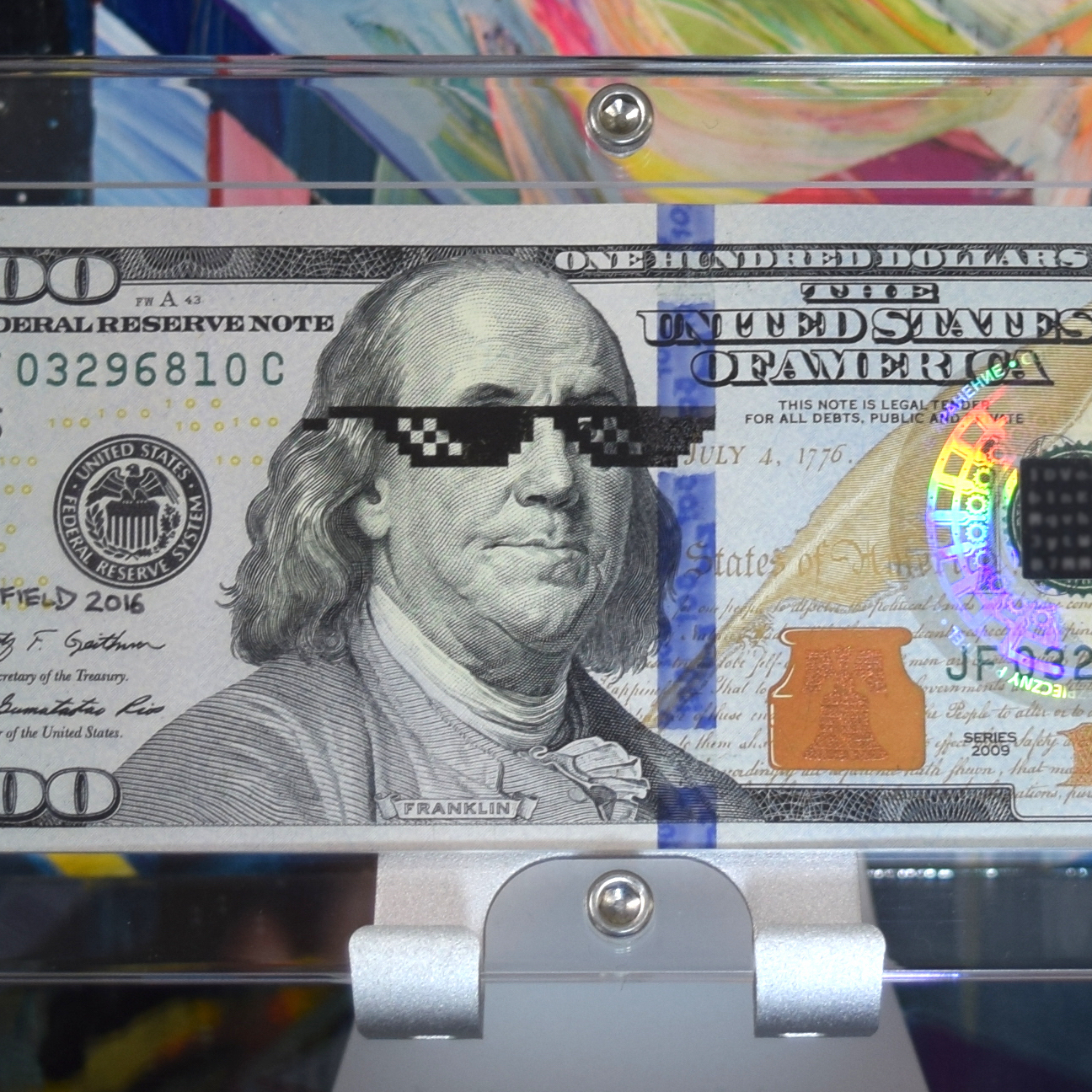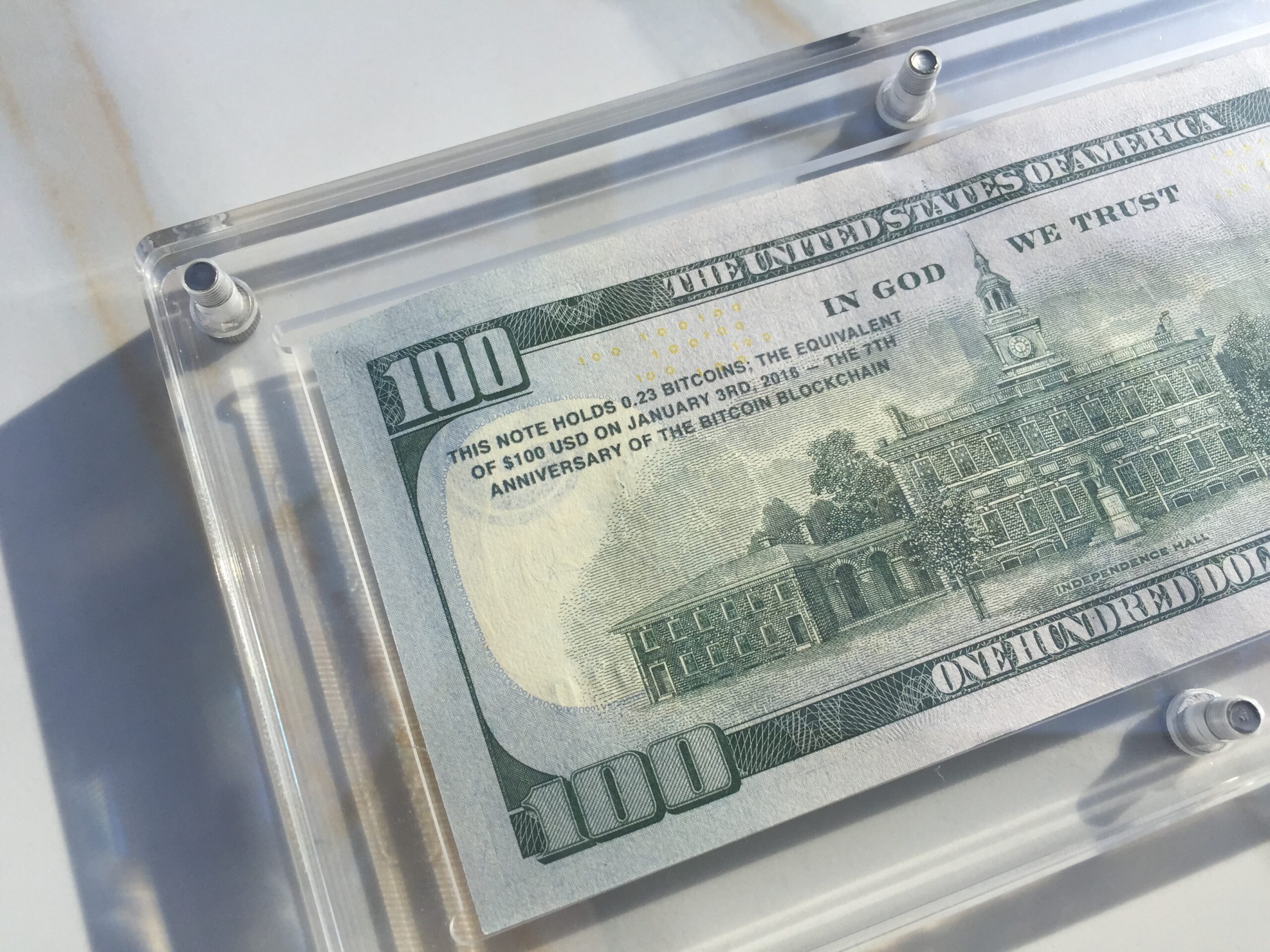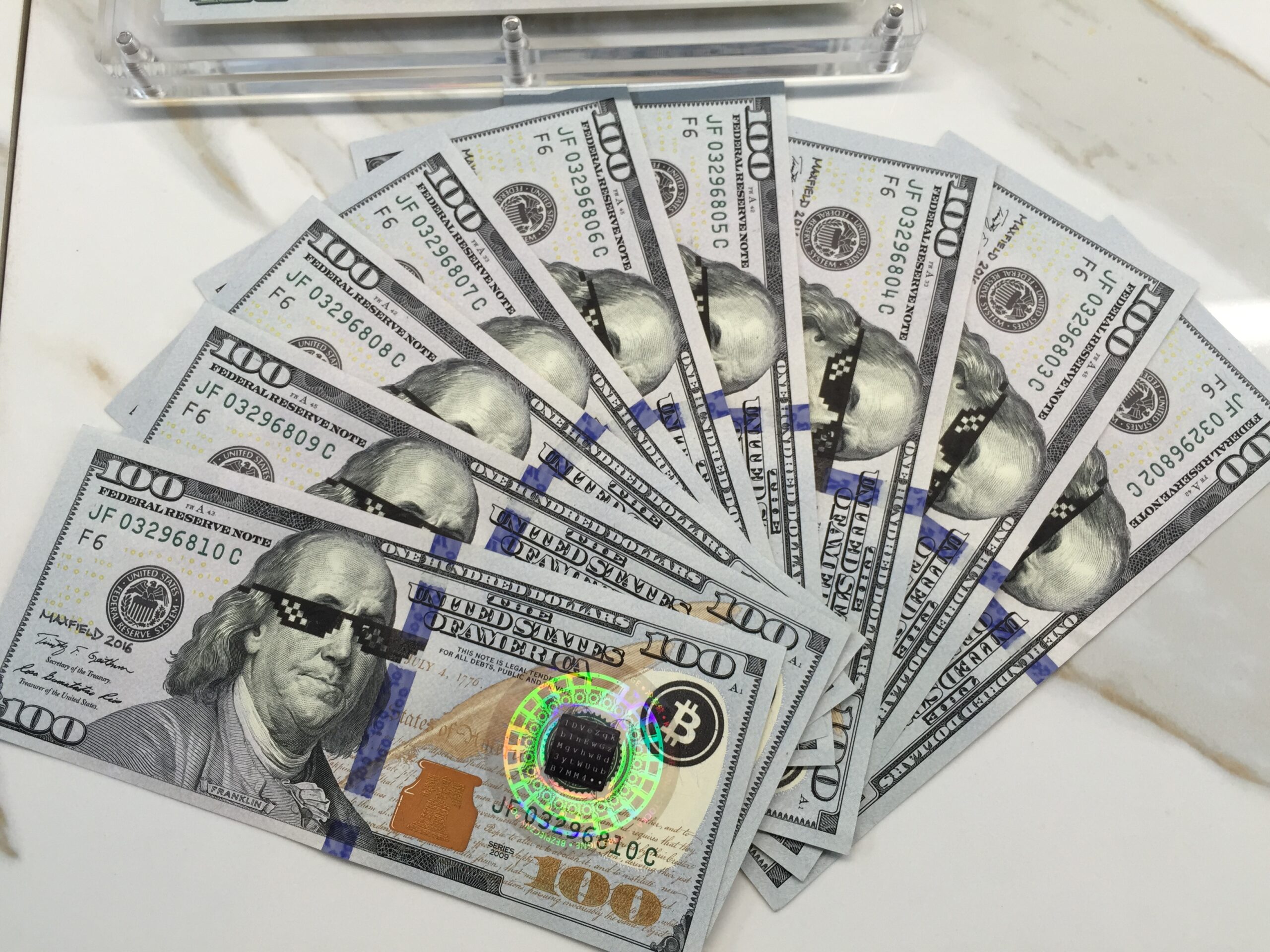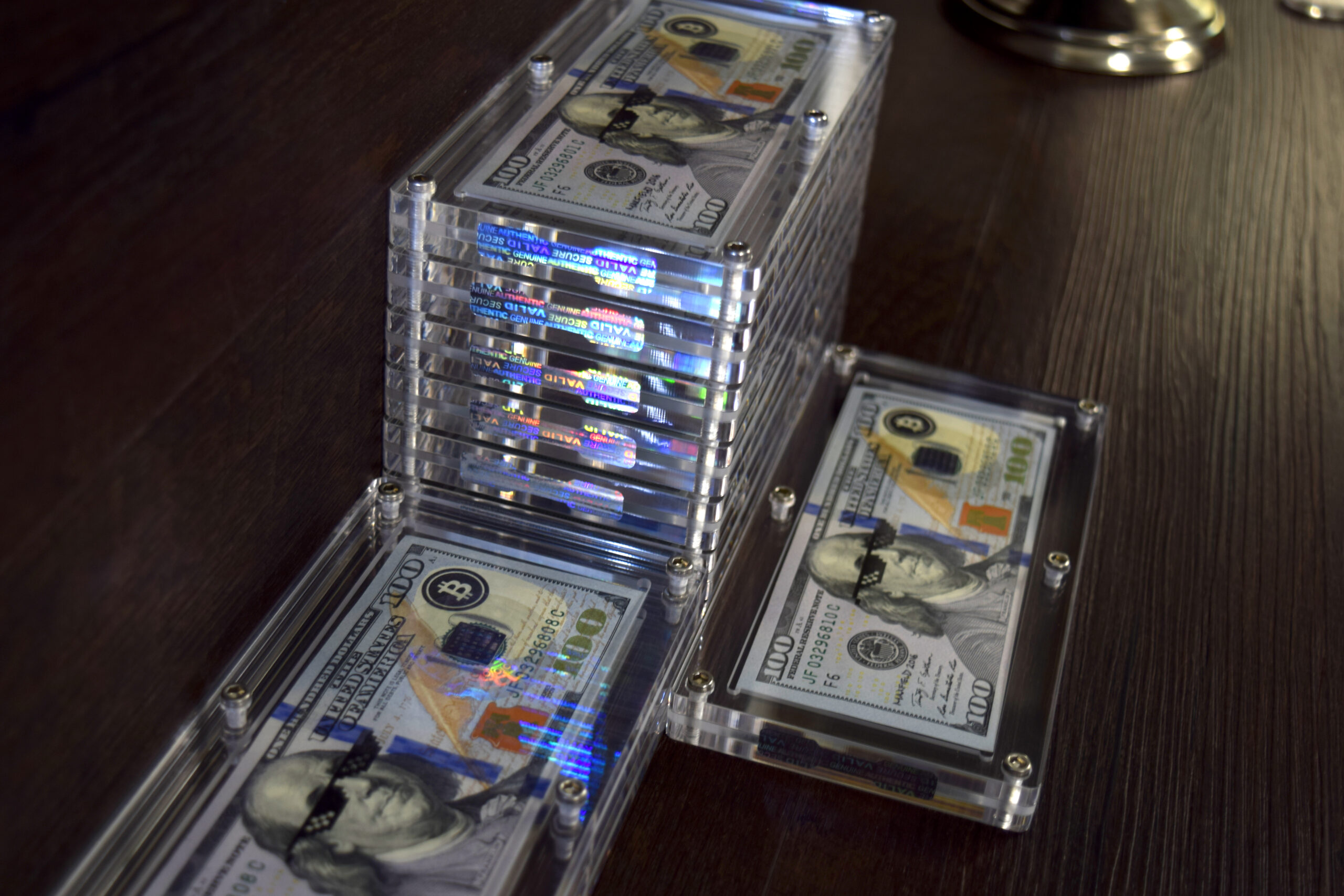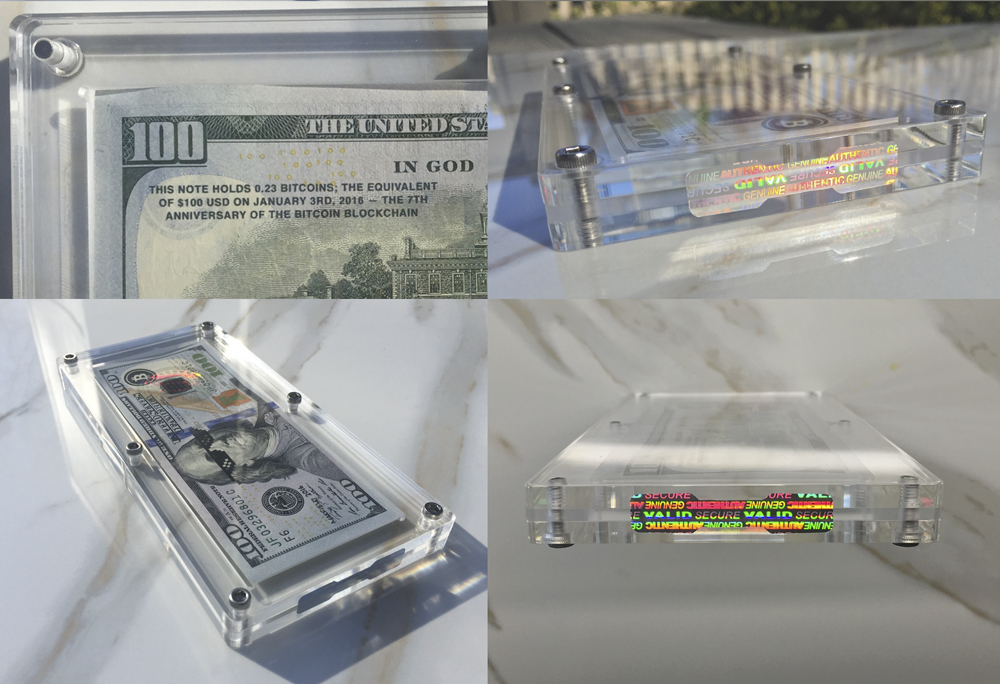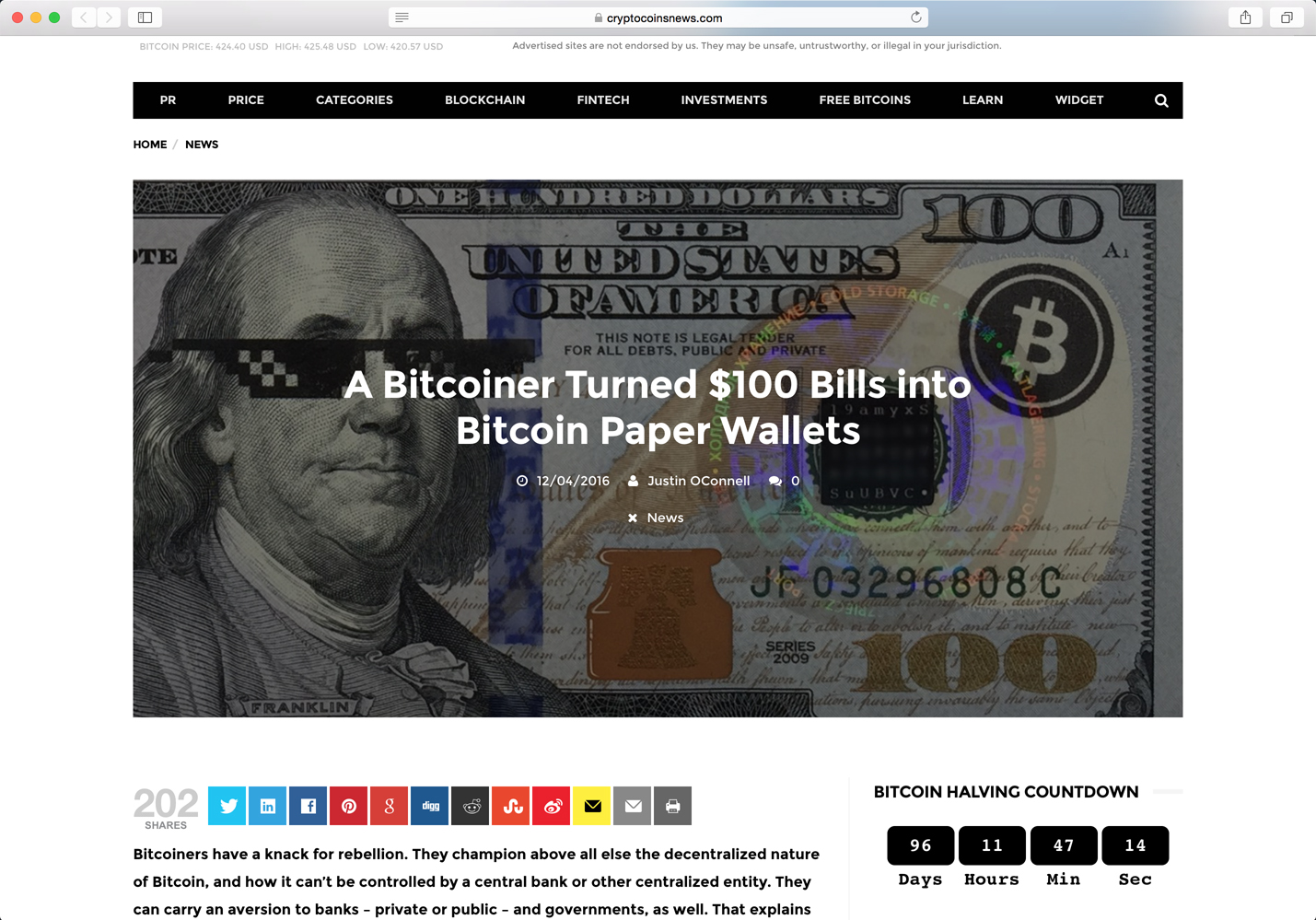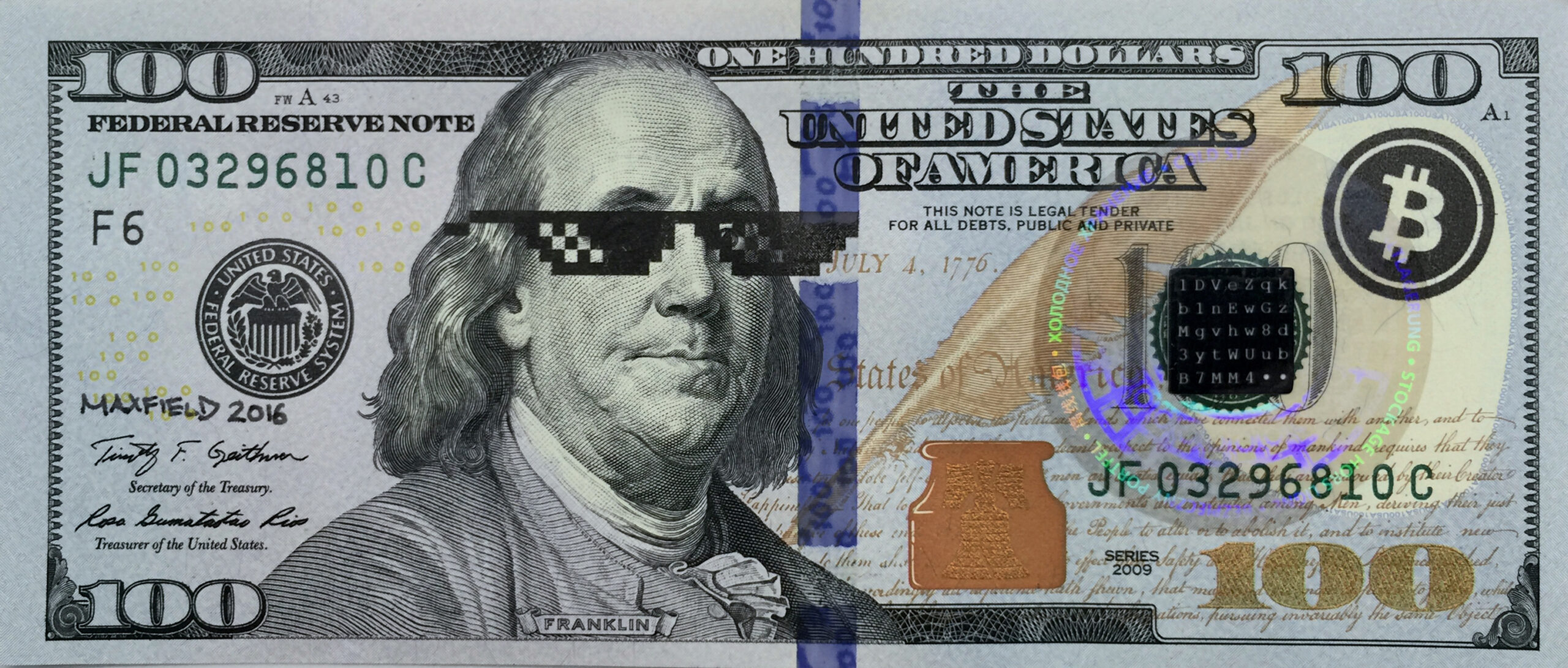While Thug Life is a parallel project and not officially part of the Kialara series,
it intersects with core themes of Kialara, making it a pivotal element in its
trajectory. Created by Max Mellenbruch, this project features ten one-hundred
dollar bills printed in 2009, the year the Bitcoin genesis block was mined, with
sequential serial numbers ending in a range from 01 to 10.
Each bill depicts Benjamin Franklin wearing “Thug Life” sunglasses, a nod to
the iconic meme rooted in 1990s American hip-hop culture and popularized
by rapper Tupac Shakur. This cultural symbol embodies resilience and defiance
in the face of systemic inequality. The notes also bear a Bitcoin logo and a
phrase on the back: “This note holds .23 bitcoins; the equivalent of $100 USD
on January 3rd, 2016 — the 7th anniversary of the Bitcoin Blockchain.” At the
time of this writing, those 0.23 Bitcoins are worth approximately $15,000 USD,
highlighting a staggering 14,900% increase in value. This dramatic increase
exemplifies the artwork’s original concept: the growing gap between the
purchasing power of the dollar and Bitcoin.
The bills are securely encased in clear acrylic display cases, fastened with metal
screws at each corner. To ensure integrity and security, tamper-proof holograms are
applied to the outside of the case, permanently sealing it without compromising
the holograms.
The Thug Life edition critiques the traditional financial system and celebrates
Bitcoin’s potential as a superior alternative. By juxtaposing the fixed value of the
dollar with Bitcoin’s increasing value, it underscores the fundamental difference
between inflationary fiat currencies and Bitcoin’s deflationary nature. The
artwork encapsulates the concept of the ‘time value of money,’ emphasizing how
the value of money changes over time due to factors like inflation and interest
rates, with Bitcoin’s scarcity significantly influencing its appreciation.
This piece serves as a powerful commentary on the evolving landscape of finance,
highlighting Bitcoin’s potential and the limitations of fiat currencies. Using money
as a medium for artwork is provocative, especially in the Bitcoin context, where
it represents a bold statement affirming free speech. The integration of the
“Thug Life” meme adds a rich layer of meaning, connecting Bitcoin to the spirit of
defiance and aligning with the Bitcoiner community’s rebellious identity.
The artwork also generated controversy, as altering currency typically does.
Some questioned its legality, but it was clarified that defacing a bill is illegal only
if intended to render it unfit for recirculation, which is not the case here. This
controversy underscores the piece’s power as an act of free speech, challenging
money’s symbolic sovereignty.
Blending meme culture with a potent economic statement, the Thug Life edition
effectively communicates Bitcoin’s innovative and rebellious ethos, making it a
compelling piece in the broader narrative of cryptocurrency’s rise.
